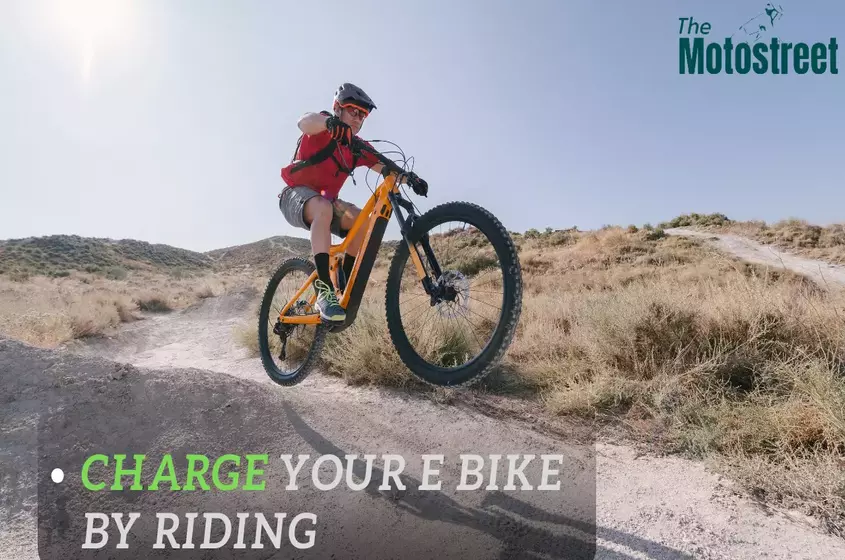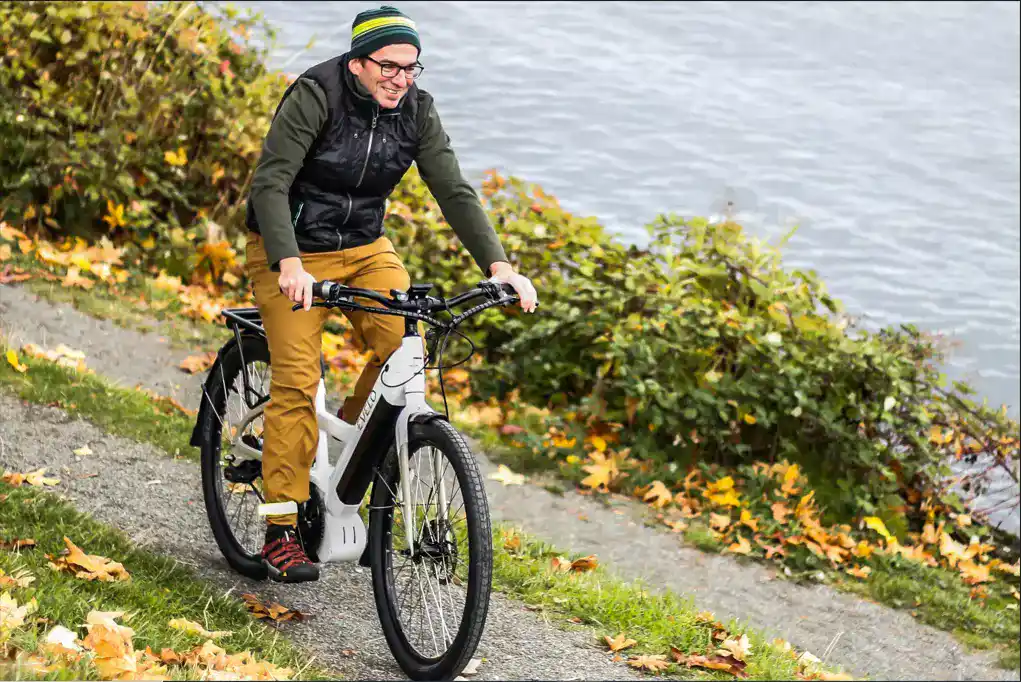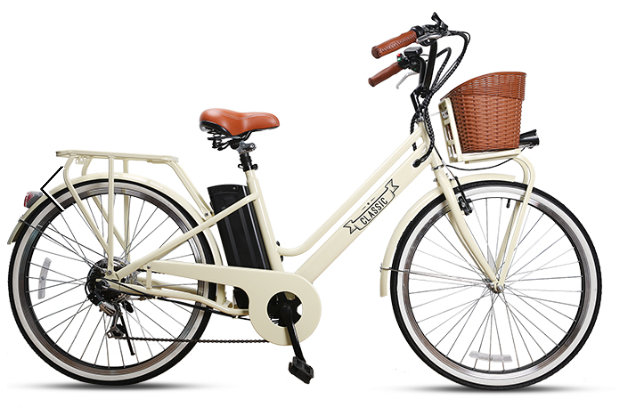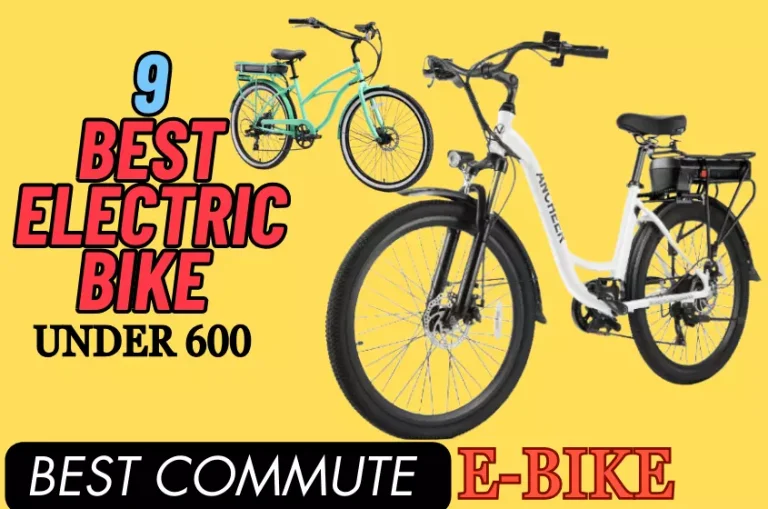Do Electric Bikes Charge when You Pedal?
There is a rumor that electric bikes can charge as you pedal. Well, this rumor is false practically it has not been possible to have the charging fully dependent on pedaling. In electric bikes, it can be only obtained through regenerative braking.
Electric bikes have maintained their status in our society as they have been proven to be a great asset in terms of healthy living. A person can use electric bike pedal assisting capabilities in severe ways. Electric bikes play an important role when an extra boost is needed.

Discover how electric bikes work and their charging mechanisms. Learn if e-bikes can charge while you pedal and explore future innovations.
Do Electric Bikes Charge As You Pedal?
In the world of electric bikes with pedals, the concept of charging a battery with the simple act of pedaling has sparked curiosity. Exploring the potential for electric bikes to be charged by pedaling unveils the technological intricacies and considerations surrounding this innovative idea.
Electric bikes with pedals, often referred to as e-bikes, have become popular for their eco-friendly and efficient transportation solutions. However, the notion of charging a battery with a bicycle through the act of pedaling is not as straightforward as it may seem.
While the idea of pedal charging may capture the imagination, the reality is that mainstream electric bikes are not designed to directly charge their batteries as you pedal. The efficiency of this process, known as pedal charging, is hindered by various factors.
Regenerative Braking Technology :
Instead of direct pedal charging, some electric bikes incorporate regenerative braking technology. This feature allows the bike to recover energy during braking or descending hills, converting it back into electricity to recharge the battery. However, the efficiency gains from regenerative braking are typically modest, around 2%.
Efficiency Challenges while paddling:
Charging a battery with a bicycle through pedaling involves significant energy conversion losses. When you pedal, your mechanical energy is highly efficient, but converting it into electricity incurs losses, often ranging from 30% to 40%. This makes the overall efficiency of pedal charging less practical compared to other charging methods.
In real electric bikes with pedals:
A few experimental solutions, such as the Copenhagen Wheel, have attempted to integrate regenerative capabilities by pedaling backward. While intriguing, such solutions are not yet widespread due to technical complexities and limited efficiency gains.
The concept of electric bikes charging when you pedal is an innovative idea but faces practical challenges in terms of efficiency and implementation. While regenerative braking technology exists, mainstream electric bikes primarily rely on dedicated charging systems. The continuous evolution of electric bike technology may bring about new innovations, but for now, the most effective way to recharge an e-bike remains through conventional charging methods.
list of E-bikes that provides regenerative braking in 2023
| Bulls E-Stream EVO AM 4 | This bike is priced at $5,499 and has a regenerative braking system. |
| Haibike XDURO AllMtn 8.0 | This bike is priced at $6,999 and has a regenerative braking system. |
| Riese & Müller Supercharger2 GT Rohloff | This bike is priced at $9,789 and has a regenerative braking system. |
| Trek Powerfly FS 9 LT | This bike is priced at $7,999 and has a regenerative braking system. |
| Specialized Turbo Vado SL 5.0 EQ | This bike is priced at $4,800 and has a regenerative braking system. |
| Giant Road E+1 Pro | This bike is priced at $5,500 and has a regenerative braking system. |
| Cannondale Synapse NEO SE | This bike is priced at $5,000 and has a regenerative braking system. |
| BMC Alpenchallenge AMP Sport | This bike is priced at $4,999 and has a regenerative braking system. |
| Moustache Samedi 27 Xroad FS 5 | This bike is priced at $6,999 and has a regenerative braking system. |
| Gazelle Ultimate T10 HMB | This bike is priced at $4,999 and has a regenerative braking system. |
Do self-charging electric bikes exist?
Yes, there are electric bikes that can charge themselves by using regenerative braking systems. By this regenerative technique, the energy is stored in the battery whenever a person brakes. But it is a very slow person and it can only yield 5% of the maximum charging capacity. Yet you may find it useful.
How do batteries charge on e-bike
The batteries on the usual e-bikes are charged through the adapter that we plug into the electricity source. Charging the bike may differ because of the size of the battery and the technology used for charging. However, the electric bike itself does not charge itself yet. There is a technology named regenerative braking, that has been used in some electric bikes to recharge the battery. Regenerative braking is not much efficient.
On the other hand, most electric bikes on the market today do not actively charge the battery while pedaling. Instead, they use the battery power to provide assistance to the rider. When the rider pedals, the motor engages and provides an extra boost, making it easier to pedal uphill or ride at higher speeds.

How Do Electric Bikes Work?
1. Regenerative Braking
What is regenerative braking in e-bike?
E-bike regenerative braking sends some energy back to the battery, providing a small recharge. It’s important to note that this doesn’t generate a lot of power and won’t fully charge the battery.
How regenerative braking works in e-bike?
Regenerative braking makes electric bikes work better by grabbing energy when you brake and putting it back into the bike. This saves battery power, making your ride go farther and using energy smarter.
Which motor offers regenerative braking?
Regenerative braking needs a special motor, called a Direct Drive hub motor. This motor does double duty by working as both a power generator and a drive system for the bike. So, when you brake, it not only slows you down but also turns that braking energy into power for the bike.
Human Limits in Regenerative Braking for Electric Bike Charging
Regenerative braking has been considered one of the way right now to achieve charging while riding an electric bike. But the regenerative braking has been fallout to be useless in most cases it can recharge the battery but 5 to 10 % at its peak performance. In terms of science trying to charge the e-bike with this method comes with a very great energy loss.
The human body can not generate more outcomes than this. Even to achieve this 5 to 10% one has to take a lot of breaks at high speed and pedal downhill. Breaking and energy generation have a direct relation with each other because when the rider applies the brakes during the ride the motor switch is act as a generator or generator mode converting the kinetic energy into electrical energy.
This electrical energy is stored in the battery for a long distance. So the higher the speed is while breaking the higher will be charge of the battery. So that is the reason electric bikes charge as you pedal.
2. Pedal assist and Throttle mode charging
There is a misconception that the pedal assist and the throttle mode technologies are used to charge the battery. But in reality, there is no such technology yet that can deliver the full potential of charging the bike.
Pedal assist is the technology mounted with the pedals.The speed of an e-bike is determined solely by its power assist function, which is independent of the battery recharge process. This power assist feature is designed to enhance the bike’s speed and performance on specific types of terrain.
While throttle mode is the controller mounted on the handlebar of an electric bike. It has the same purpose as the pedal assist. It is used to set up the speed of an electric bike this process also does not create any means to regenerate the battery.
3. Batteries used in Ebikes
The batteries used in electric bikes vary for the purpose of an electric bike. Most companies use standard lithium-ion batteries in their electric bikes. These batteries do not allow an electric bike to self-charge as self-charging batteries are also available.
Self charging bikes are in the experimental stage yet and some companies claim to master it but the technology used is regenerative braking.
4. Self Charging Electric bikes
Self-charging electric bikes work on regenerative brakings that allow a person to charge a battery up to 5 to 10%. The motor used in this process is a hub motor. Hub motors are used in a way that reverses charging could be possible with energy generated by the breaking phenomenon. Though self-charging bikes are not ideal.
Experimental Designs Of Self Charging Electric Bike
All of the experimentations have been done in order to create the perfect prototype of self-charging electric bikes. There are a lot of companies that have been working hard to succeed in creating the perfect Self Charging Electric Bike.
The Byer Volta is a newly created bike that works with backpedaling technology with a shaft-driven design. The company has been announcing that this bike can completely charge its battery through this back paddling technology.
The byer volta can be the new race of ebikes. There is another bike named Vello Bike+. The creators of this bike say it works on KERS technology which is basically a kinetic energy recovery system. They claim that this technology can charge the full battery of the electric bike.
The regenerative braking phenomenon has its pros and cons;
For more information:
- visit our site: Themotostreet
The Ups and Downs of Regenerative Braking on E-Bikes
Pros
Cons
Conclusion
The electric bikes are proving themselves as you can charge electric bikes as you pedal because the future for safe and healthy travel with in small areas. As the electric bikes can do maximum of 100 miles or less based on the size of batteries. These batteries can be run out of charge anyways. By adding on the self charge mechanism it provides extra range that every one really want to expect from their ebikes. This is the new gateway in ebikes cycle and it has started proving itself. Adaptation to this technology will be very costly but in the end it is a great investment over all.



